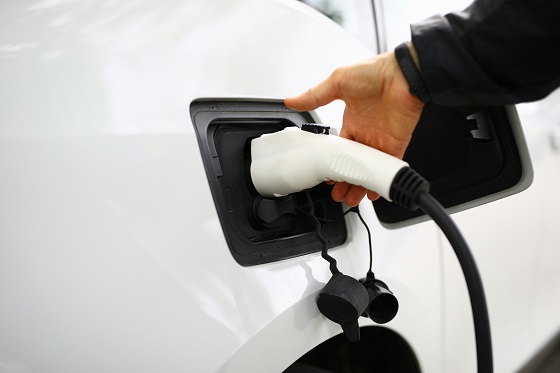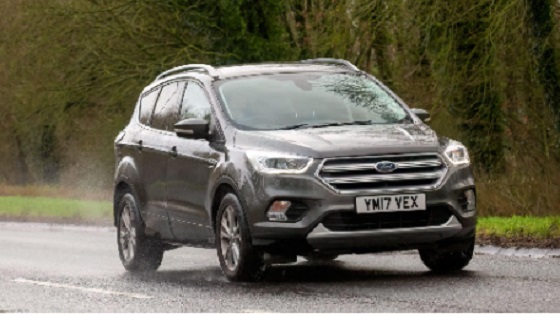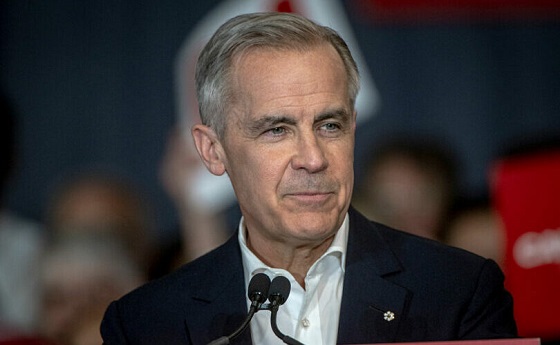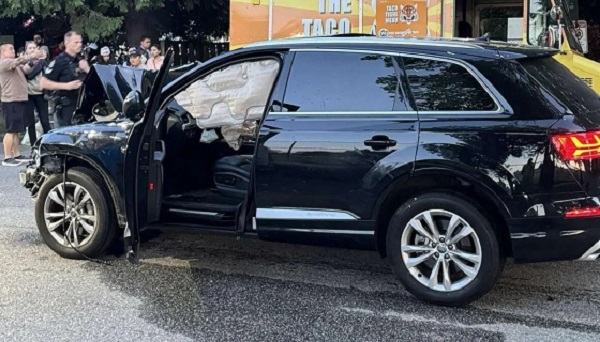Automotive
SAFE FINISHES FOR CENTRAL ALBERTA’S THOMPSON IN CHAOTIC CONTINENTAL GT3 CUP WEEKEND
from Parker Thompson Racing
August 05, 2019
ROAD AMERICA – ELKHART LAKE, WI

This weekend at the famed Wisconsin road course, Road America, thirty-seven Porsche racers from across the continent gathered for two races with implications in both the Canadian and USA divisions of the IMSA GT3 Cup Challenge. The event marked the second of two continental events on the 2019 GT3 Cup calendar, after groups from both countries gathered at the Montreal F1 Grand Prix in June. Driving the #3 entry of Porsche Centre Victoria and SCB Racing, Parker Thompson arrived at Road America ranked 2nd overall in the Canadian championship. In races marred by multiple collisions and lengthy durations under caution, the Alberta native earned two top ten finishes, gaining positions during race action after a difficult qualifying result.
With nearly twice the number of entrants usually seen at Canadian series events, dense traffic on course had an impact throughout the weekend. Qualifying saw many drivers, including Thompson, struggle to find space on the fourteen-turn road course. In an abbreviated session, cut short by an incident on track, Thompson managed only the 12th best qualifying time.
Chaos continued during races on Saturday and Sunday. Drivers involved in close battles throughout the field generated multiple collisions and a string of yellow-flagged laps. Records show that more than three-quarters of race laps during the weekend were driven under caution with the guidance of the Porsche Panamera safety car. For the most part Thompson managed to avoid the chaos. In Race 1, an impact between drivers Dussault and Gomez nearly collected Thompson. He would avoid a collision by jumping the curb and driving his car across the grass to avoid the pair as they spun. It was a close call that would allow multiple drivers to drive past the black and gold #3 car. In only three green flag laps to follow, Thompson would gain three positions. Climbing from 12th, he would finish 9th overall, and sixth among Canadian competitors.
Race 2 showed a slightly better result – Thompson would finish seventh overall. With only one non-Canadian competitor ahead of him however, he was not able to improve on his championship points earnings from Race 1. The result allowed rival Jeff Kingsley to pass Thompson and take second spot in the overall Canadian series championship standings. The two will enter the series finale next month at Circuit Mont Tremblant, separated by only two points.
Parker Thompson
“Anytime there are this many race cars on the track things are bound to get interesting. We knew going into the weekend that setting a good time in qualifying was absolutely critical. Porsche Centre Victoria and SCB Racing gave me a fantastic race car. Unfortunately, I wasn’t able to put a complete lap together to earn the starting grid that we were looking for. With a limited amount of green flag racing this weekend, I’m happy with how we were able to take advantage of the limited opportunities we saw to move up.”
Results
IMSA GT3 CUP CHALLENGE CANADA – Rounds 9 & 10
Qualifying – (PDF)
Race 1 – Provisional (PDF)
Race 2 – Provisional (PDF)
Overall Standings (PDF)
Next Events
August 09 – 11, 2019 – CTCC Round 7 & 8 – GP3R, Trois Rivieres, QC
August 23 – 25, 2019 – CTCC Round 9 & 10 – CTMP, Bowmanville, ON
August 24 – 25, 2019 – IP2000 Round 12 – Gateway Motorsports Park, IL
About Parker Thompson
Red Deer, Alberta native Parker Thompson is regarded as one of Canada’s premiere racing drivers. He started racing karts at age 8 and his natural talent and competitive drive quickly elevated him to international level competitions. By age 13 he was ranked 3rd in the world in Rotax Max karts. Now 21 years old, Parker continues his successful career racing on the Road to Indy, and in multiple sports car series.
Automotive
Major automakers push congress to block California’s 2035 EV mandate

 MxM News
MxM News
Quick Hit:
Major automakers are urging Congress to intervene and halt California’s aggressive plan to eliminate gasoline-only vehicles by 2035. With the Biden-era EPA waiver empowering California and 11 other states to enforce the rule, automakers warn of immediate impacts on vehicle availability and consumer choice. The U.S. House is preparing for a critical vote to determine if California’s sweeping environmental mandates will stand.
Key Details:
-
Automakers argue California’s rules will raise prices and limit consumer choices, especially amid high tariffs on auto imports.
-
The House is set to vote this week on repealing the EPA waiver that greenlit California’s mandate.
-
California’s regulations would require 35% of 2026 model year vehicles to be zero-emission, a figure manufacturers say is unrealistic.
Diving Deeper:
The Alliance for Automotive Innovation, representing industry giants such as General Motors, Toyota, Volkswagen, and Hyundai, issued a letter Monday warning Congress about the looming consequences of California’s radical environmental regulations. The automakers stressed that unless Congress acts swiftly, vehicle shipments across the country could be disrupted within months, forcing car companies to artificially limit sales of traditional vehicles to meet electric vehicle quotas.
California’s Air Resources Board rules have already spread to 11 other states—including New York, Massachusetts, and Oregon—together representing roughly 40% of the entire U.S. auto market. Despite repeated concerns from manufacturers, California officials have doubled down, insisting that their measures are essential for meeting lofty greenhouse gas reduction targets and combating smog. However, even some states like Maryland have recognized the impracticality of California’s timeline, opting to delay compliance.
A major legal hurdle complicates the path forward. The Government Accountability Office ruled in March that the EPA waiver issued under former President Joe Biden cannot be revoked under the Congressional Review Act, which requires only a simple Senate majority. This creates uncertainty over whether Congress can truly roll back California’s authority without more complex legislative action.
The House is also gearing up to tackle other elements of California’s environmental regime, including blocking the state from imposing stricter pollution standards on commercial trucks and halting its low-nitrogen oxide emissions regulations for heavy-duty vehicles. These moves reflect growing concerns that California’s progressive regulatory overreach is threatening national commerce and consumer choice.
Under California’s current rules, the state demands that 35% of light-duty vehicles for the 2026 model year be zero-emission, scaling up rapidly to 68% by 2030. Industry experts widely agree that these targets are disconnected from reality, given the current slow pace of electric vehicle adoption among the broader American public, particularly in rural and lower-income areas.
California first unveiled its plan in 2020, aiming to make at least 80% of new cars electric and the remainder plug-in hybrids by 2035. Now, under President Donald Trump’s leadership, the U.S. Transportation Department is working to undo the aggressive fuel economy regulations imposed during former President Joe Biden’s term, offering a much-needed course correction for an auto industry burdened by regulatory overreach.
As Congress debates, the larger question remains: Will America allow one state’s left-wing environmental ideology to dictate terms for the entire country’s auto industry?
Also Interesting
Top Used Ford SUVs for Families and Adventurers

Finding the perfect SUV that balances comfort, safety, and adventure-ready performance can be a challenge, but Ford’s lineup of used SUVs offers some of the best options available. Whether you need a spacious vehicle for your growing family or an all-terrain companion for weekend getaways, there’s a Ford SUV to match your lifestyle. Let’s explore the top choices that deliver reliability, versatility, and affordability.
What to Look for in a Used Ford SUV?
Before diving into specific models, it’s essential to know what features matter most when shopping for a used Ford SUV. Here are key factors to consider:
● Safety Features – Look for models equipped with Ford Co-Pilot360, which includes automatic emergency braking, blind-spot monitoring, and adaptive cruise control.
● Reliability and Maintenance Costs – Research common issues and ensure the SUV has a solid maintenance history.
● Fuel Efficiency – Choose a model that aligns with your commuting or road trip needs.
● Cargo and Passenger Space – Ensure the SUV has enough room for your family, gear, and pets.
● Off-Road Capability – If adventure is your goal, opt for models with all-wheel drive (AWD) or four-wheel drive (4WD).
If you’re ready to explore available options, check out https://stampedeauto.com/used-ford/ for a selection of quality used Ford SUVs.
1. Ford Escape – The Compact Family Favorite
The Ford Escape is a practical, fuel-efficient SUV perfect for small families and urban explorers. With a history of strong safety ratings and a spacious interior, it strikes a balance between convenience and performance.
Why Choose a Used Ford Escape?
● Fuel Efficiency – Older models with the 1.5L EcoBoost engine offer up to 30 MPG highway.
● User-Friendly Technology – Equipped with Ford SYNC infotainment and smartphone connectivity.
● Versatile Cargo Space – Fold-flat rear seats provide ample room for groceries, sports equipment, or luggage.
● Best Model Years to Buy – 2018-2021 models have modern safety features and improved fuel economy.
2. Ford Edge – The Perfect Mid-Size Balance
For those who want more space without stepping into full-size territory, the Ford Edge is an ideal midsize SUV. It offers a roomy two-row layout, strong engine options, and a smooth ride.
Why Choose a Used Ford Edge?
● Spacious Cabin – More rear legroom than many competitors.
● Powerful Engine Choices – Available 2.0L EcoBoost and 2.7L V6 for extra performance.
● Advanced Safety Features – Includes lane-keeping assist and pre-collision assist in newer models.
● Best Model Years to Buy – 2019-2022 models offer a modern design and strong reliability.
3. Ford Explorer – The Ultimate Family SUV

If you need three rows of seating without sacrificing performance, the Ford Explorer is a top contender. It’s an excellent SUV for large families and those who need extra passenger capacity.
Why Choose a Used Ford Explorer?
● Seating for Up to Seven – Third-row seats offer flexibility for larger families.
● Strong Towing Capacity – Can tow up to 5,000 lbs when properly equipped.
● Powerful Yet Efficient – The 2.3L EcoBoost engine delivers a balance of power and fuel savings.
● Best Model Years to Buy – 2017-2022 models feature advanced driver assistance and improved comfort.
4. Ford Expedition – The Full-Size Powerhouse
For those who need maximum space and towing capability, the Ford Expedition is a standout choice. It’s built for large families, cross-country road trips, and hauling heavy loads.
Why Choose a Used Ford Expedition?
● Room for Eight – A full-size SUV with unmatched passenger space.
● Towing King – Can tow up to 9,300 lbs, ideal for boats and trailers.
● High-Tech Features – SYNC 3 infotainment and multiple USB ports keep everyone connected.
● Best Model Years to Buy – 2018-2022 models have turbocharged efficiency and refined interiors.
5. Ford Bronco Sport – The Adventurer’s Compact Choice
For outdoor enthusiasts, the Ford Bronco Sport is a rugged compact SUV designed for off-road fun while still being a practical daily driver.
Why Choose a Used Ford Bronco Sport?
● Trail-Ready Performance – Standard AWD and off-road modes for different terrains.
● Compact Yet Spacious – Clever storage solutions for camping and gear.
● Turbocharged Engines – 1.5L and 2.0L EcoBoost options for strong performance.
● Best Model Years to Buy – 2021-2023 models provide the latest tech and rugged styling.
Before purchasing a used Ford Bronco Sport, be sure to check for any recalls. For example, certain Ford Bronco Sport and Maverick models have been recalled to fix faulty batteries. To learn more about this, visit Consumer Reports’ coverage on the recall.
Buying Tips: How to Get the Best Deal on a Used Ford SUV
● Certified Pre-Owned (CPO) Options – Ford’s CPO program includes extended warranties and inspections.
● Check Vehicle History Reports – Avoid SUVs with major accidents or unresolved recalls.
● Test Drive and Inspection – Always inspect brakes, transmission, and suspension.
● Compare Prices – Look at local dealerships and online marketplaces for the best deals.
● Negotiate Smartly – Research market value and be prepared to walk away if needed. It also helps to choose a used car dealer with transparent pricing and a solid reputation.
Conclusion
Choosing the right used Ford SUV depends on your specific needs. If you want fuel efficiency and city-friendly size, the Escape is a great choice. For those needing extra space and towing power, the Explorer or Expedition are top contenders. If adventure is a priority, the Bronco Sport
offers unbeatable off-road capability.
No matter which Ford SUV you choose, you’ll get a reliable vehicle that blends comfort, technology, and performance—without the high price tag of a new model. Start your search today and find the perfect used Ford SUV for your family or next adventure.
-

 Bjorn Lomborg2 days ago
Bjorn Lomborg2 days agoNet zero’s cost-benefit ratio is CRAZY high
-

 2025 Federal Election2 days ago
2025 Federal Election2 days agoMark Carney Wants You to Forget He Clearly Opposes the Development and Export of Canada’s Natural Resources
-

 2025 Federal Election2 days ago
2025 Federal Election2 days agoPolice Associations Endorse Conservatives. Poilievre Will Shut Down Tent Cities
-

 2025 Federal Election2 days ago
2025 Federal Election2 days agoCarney’s Hidden Climate Finance Agenda
-

 2025 Federal Election2 days ago
2025 Federal Election2 days agoPolls say Canadians will give Trump what he wants, a Carney victory.
-

 2025 Federal Election2 days ago
2025 Federal Election2 days agoColumnist warns Carney Liberals will consider a home equity tax on primary residences
-

 2025 Federal Election2 days ago
2025 Federal Election2 days agoNine Dead After SUV Plows Into Vancouver Festival Crowd, Raising Election-Eve Concerns Over Public Safety
-

 International2 days ago
International2 days agoJeffrey Epstein accuser Virginia Giuffre reportedly dies by suicide





